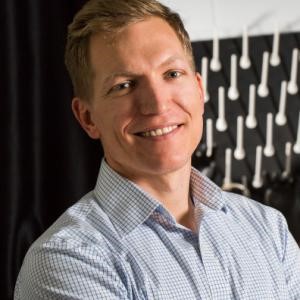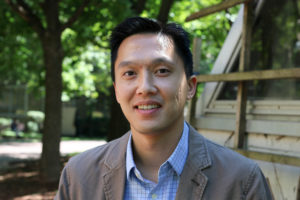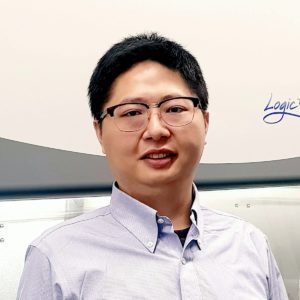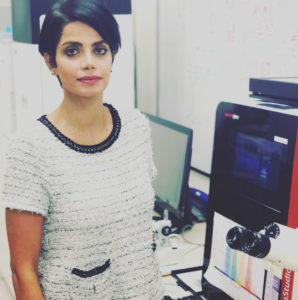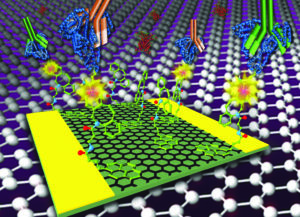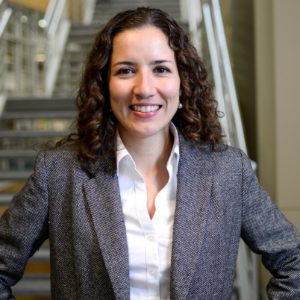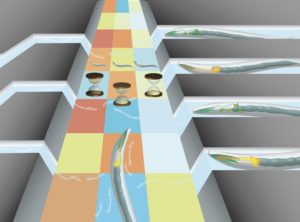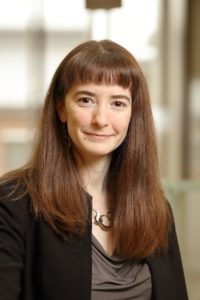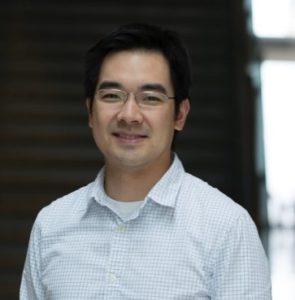We are delighted to introduce our latest Lab on a Chip Emerging Investigators, Jonathan Song and Shaurya Prakash!
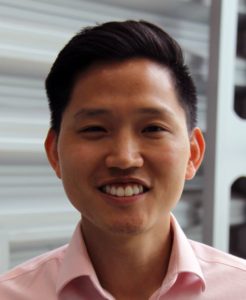 Jonathan Song is an Assistant Professor of Mechanical and Aerospace Engineering and Faculty Member of the Comprehensive Cancer Center at the Ohio State University (OSU). He received his B.S. in Biomedical Engineering (BME) from Northwestern University and his Ph.D. in BME from the University of Michigan while working in the laboratory of Dr. Shu Takayama. He completed a post-doctoral fellowship in the laboratory of Dr. Lance Munn in the Edwin L. Steele Laboratory at Massachusetts General Hospital and Harvard Medical School. Since 2014, he has been a faculty member at OSU where he leads an interdisciplinary lab that applies microtechnology, principles from tissue engineering, and quantitative engineering analysis for studying the physical dynamics of tumor and vascular biology. As a faculty member, he has received the NSF CAREER Award, the American Heart Association (AHA) Scientist Development Grant, and the OSU Comprehensive Cancer Center Pelotonia Junior Investigator Award. His research has been funded by the National Institutes of Health (NIH), NSF, AHA, American Cancer Society (ACS), and the OSU Institute for Materials Research.
Jonathan Song is an Assistant Professor of Mechanical and Aerospace Engineering and Faculty Member of the Comprehensive Cancer Center at the Ohio State University (OSU). He received his B.S. in Biomedical Engineering (BME) from Northwestern University and his Ph.D. in BME from the University of Michigan while working in the laboratory of Dr. Shu Takayama. He completed a post-doctoral fellowship in the laboratory of Dr. Lance Munn in the Edwin L. Steele Laboratory at Massachusetts General Hospital and Harvard Medical School. Since 2014, he has been a faculty member at OSU where he leads an interdisciplinary lab that applies microtechnology, principles from tissue engineering, and quantitative engineering analysis for studying the physical dynamics of tumor and vascular biology. As a faculty member, he has received the NSF CAREER Award, the American Heart Association (AHA) Scientist Development Grant, and the OSU Comprehensive Cancer Center Pelotonia Junior Investigator Award. His research has been funded by the National Institutes of Health (NIH), NSF, AHA, American Cancer Society (ACS), and the OSU Institute for Materials Research.
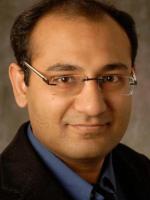
Shaurya Prakash is an Associate Professor of Mechanical & Aerospace Engineering and Infectious Diseases Institute (IDI) Thematic Program Director (for Prevention, Detection, and Therapies) at The Ohio State University (OSU). He graduated with a Ph.D. in Mechanical Engineering from the University of Illinois at Urbana-Champaign in 2007 and with a B.S. also in Mechanical Engineering from the University of Arkansas, Fayetteville in 2001. He has been on the faculty at The Ohio State University since fall 2009 where he directs the Microsystems and Nanosystems Laboratory. His research group focuses on designing, fabrication, and characterization of microsystems and nanosystems for applications in healthcare and engineering biology, water purification, and alternate and renewable energy. The main goals of their research are to: provide a scientific and technological solution to the pressing problems of a rapidly evolving modern society, and educate ourselves, our students, and the community we serve.
Read their Emerging Investigators Series article “Flow dynamics control endothelial permeability in a microfluidic vessel bifurcation model” and find out more about them in the interview below:
Your recent Emerging Investigator Series paper focuses on the role flow dynamics play in endothelial permeability in a microfluidic vessel bifurcation model. How has your research evolved from your first article to this most recent article?
Jonathan: This is a very nice question. I have been thinking of flow dynamics and generally blood vessel remodeling and angiogenesis for quite a long time now and how microfluidics is a very powerful approach for probing this biology. This interest had first crested during my post-doc where I published a paper in 2011 with my post-doc advisor Dr. Lance Munn in PNAS (https://doi.org/10.1073/pnas.1105316108), which was also highlighted very nicely by Lab on a Chip when this article was first published (DOI: 10.1039/c1lc90131a). Through this work, I began to fully understand and appreciate how endothelial cells that line intact blood vessels have the capacity to integrate multiple extrinsic signals, both fluid mechanical and biochemical, to determine their angiogenesis fate.
This most recent article is a bit different and I consider a significant technical advancement because of the bifurcating vessel geometry produced by microfluidic system design. Previous microsystems that I and others had primarily used were mostly straight or parallel channels that do not reconstitute how actual blood vessels branch into two daughter vessels. My graduate student Ehsan Akbari came up with a clever design that we described in this latest article and enabled the results that we reported.
Shaurya: Over time, my research has evolved in many ways. My first few research articles on microscale reacting gas flows (microcombustion) in millimetre scale channels really started to establish many of the fundamental insights to reacting flows in a new type of configuration. Since then, observing the trends in my work, I see that my research has dealt with developing devices for understanding microfluidic and nanofluidic flows in a variety of configurations spanning a large range of applications from healthcare to energy and water. The goal has always been to develop science to enable new technology for solving problems important to modern society. This particular article on endothelial permeability follows (at least in my mind!) the natural extension of developing novel microfluidic systems and probing fundamental transport characteristics, which in this case happens to be for an important element in biology.
What aspect of your work are you most excited about at the moment?
Jonathan: Because of my training in microfluidics, I think I will always be excited about developing new systems and applying them to study a specific physiology. However, at present I am particularly excited in studying the subcellular biophysics that orchestrate changes in endothelial remodeling and angiogenesis. My lab is part of team along with my co-author on this article (Dr. Shaurya Prakash) and our Ohio State University (OSU) colleague Dr. Carlos Castro that was recently awarded an NIH R01 grant to specifically study this biology. One of the experimental test beds for these studies is the microfluidic system that was first described in this article.
Shaurya: Our microfluidic platform provides us tremendous flexibility in evaluating bio-chemical-electrical-mechanical aspects of the endothelium. In particular, the ability to systematically evaluate effects of a variety of mechanical, electrical, and chemical stimuli to elicit biological responses from endothelial cells present an exciting avenue for future research that can probably help us to think about how we can truly begin to reach in the domain of ‘engineering biology’.
In your opinion, what is the biggest insight into the mechanisms that control vessel function presented by your research?
Jonathan: I believe it is that the impinging stagnation point flow at the base of our bifurcating microfluidic model (which we term in the article as bifurcated fluid flow or BFF) imparts a vessel stabilizing effect that is nitric oxide (NO) dependent. This outcome has prompted multiple questions that we wish to pursue in the future that relate to vessel function and vessel maturation.
Shaurya: In this paper, the evaluation of time-dependent changes to endothelial permeability under a variety of systematically controlled local flow conditions (stagnation pressure at bifurcation point, local shear stress, and transvascular flow) showed that the mechanical forces acting on the endothelial cells biochemically-mediate endothelial remodeling processes. Here we reported the first observation of the time-dependent effect of stagnation pressure at the bifurcation point on the permeability thereby introducing stagnation flows at the base of vessel bifurcations as an important regulator of vessel permeability and suggest a mechanism by which local flow dynamics control vascular function in vivo through this in vitro study.
What do you find most challenging about your research?
Jonathan: I do like pretty much all aspects of my lab’s research and appreciate the challenges that are associated with working in interdisciplinary research. What I do find particularly challenging at times is staying on top of the most cutting-edge literature in both the microtechnology and the biology related to my lab’s work.
Shaurya: In vivo biological responses are incredibly complex. The ability to carefully design devices to elucidate systematically the underlying biophysics through in vitro systems requires bringing together various skill sets and intellectual expertise from microfluidic device design, fabrication, and characterization to appropriate biological models followed by subsequent analysis and modeling. Integrating all these skills and expertise to one platform via an interdisciplinary team is both exciting and challenging.
In which upcoming conferences or events may our readers meet you?
Jonathan: My travel patterns have varied from year to year but I typically attend Experimental Biology (or FASEB) because of my involvement with the Microcirculatory Society. I also typically attend the Summer Biomechanics, Bioengineering, and Biotransport Conference (SB3) and the Biomedical Engineering Society (BMES) Annual Meeting. I have also enjoyed attending the ASME NanoEngineering for Medicine and Biology (NEMB) conference. I have not been as active in attending some of the disease specific conferences but intend to start doing so.
Shaurya: Our results are shared at many premier meetings like MicroTAS, Hilton Head Workshop, and other related meetings.
How do you spend your spare time?
Jonathan: My wife is trained as a social worker and is a big proponent of heath and wellness. Thus, we try to stay active. For example, we like to take our son biking with us. He is only 2 years-old now so he is secured to seat on the front of my wife’s bike. Admittedly, we typically just bike to our favorite local coffee shop. I have also gotten into a little more extensive cycling, driven largely by my involvement with the OSU Comprehensive Cancer Center Pelotonia, which is an annual philanthropic bike race that has raised over $150 million for cancer research since it was started in 2008. I have rode in every Pelotonia race since I started at OSU in 2014.
Shaurya: Family time is essential to my success. Sharing my spare time with an incredibly supportive wife, amazing kids (and a wonderful fur-baby, dog) is time well spent. Any residual time after that is taken up by reading and working in my yard tending to my flower beds and lawn.
Which profession would you choose if you were not a scientist?
Jonathan: Broadly speaking, probably something in in the business world. However, if that were the case, I do not think I would be enjoying myself as much as I am now. Working with my students is probably my favorite part of being an academic scientist.
Shaurya: This is a difficult question as being an engineer and scientist has been not just a profession but a way of life in thinking about solving problems that impact modern society. As a professor, I also enjoy teaching and working with young(er) minds to develop thought processes for solving problems. In my own younger days I was a fair athlete and so being a coach that would allow me to contribute to future generations as a mentor, teacher, and role-model to facilitate positive impact on our world would be an alternate life for me.
Can you share one piece of career-related advice or wisdom with other early career scientists?
Jonathan: Invest in ideas that excite you the most. Also, when pursuing collaborative projects, try to go for the ones that are both highly significant and mutually beneficial for all parties involved.
Shaurya: Choose and work on problems you truly care about – it shows in how the science is done and technology is developed and all the essential pieces behind impactful work like idea and concept development, writing and reading to compare against state-of-art, and eventually advancing the state-of-art. Therefore, pursuing problems that one is truly passionate about is important.
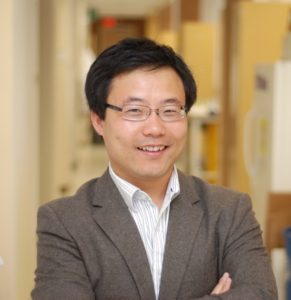 Dr. Weian Zhao is an Associate Professor at the Sue and Bill Gross Stem Cell Research Center, Chao Family Comprehensive Cancer Center, Department of Biomedical Engineering, and Department of Pharmaceutical Sciences at University of California, Irvine. Dr. Zhao is also the co-founder of Velox Biosystems Inc, Baylx Inc, and Amberstone Biosciences LLC, start-up companies that aim to develop technologies for rapid diagnosis, stem cell therapy, and drug discovery, respectively. Dr. Zhao’s research aims to 1) elucidate and eventually control the fate of transplanted stem cells and immune cells to treat cancer and autoimmune diseases, and 2) develop novel miniaturized devices for early diagnosis and monitoring for conditions including sepsis, antibiotic resistance and cancer. Dr. Zhao has received several awards including the MIT’s Technology Review TR35 Award: the world’s top 35 innovators under the age of 35 and NIH Director’s New Innovator Award. Dr. Zhao completed his BSc and MSc degrees in Chemistry at Shandong University and then obtained his PhD in Chemistry at McMaster University in 2008. During 2008-2011, Dr. Zhao was a Human Frontier Science Program (HFSP) Postdoctoral Fellow at Harvard Medical School, Brigham and Women’s Hospital and MIT.
Dr. Weian Zhao is an Associate Professor at the Sue and Bill Gross Stem Cell Research Center, Chao Family Comprehensive Cancer Center, Department of Biomedical Engineering, and Department of Pharmaceutical Sciences at University of California, Irvine. Dr. Zhao is also the co-founder of Velox Biosystems Inc, Baylx Inc, and Amberstone Biosciences LLC, start-up companies that aim to develop technologies for rapid diagnosis, stem cell therapy, and drug discovery, respectively. Dr. Zhao’s research aims to 1) elucidate and eventually control the fate of transplanted stem cells and immune cells to treat cancer and autoimmune diseases, and 2) develop novel miniaturized devices for early diagnosis and monitoring for conditions including sepsis, antibiotic resistance and cancer. Dr. Zhao has received several awards including the MIT’s Technology Review TR35 Award: the world’s top 35 innovators under the age of 35 and NIH Director’s New Innovator Award. Dr. Zhao completed his BSc and MSc degrees in Chemistry at Shandong University and then obtained his PhD in Chemistry at McMaster University in 2008. During 2008-2011, Dr. Zhao was a Human Frontier Science Program (HFSP) Postdoctoral Fellow at Harvard Medical School, Brigham and Women’s Hospital and MIT.










